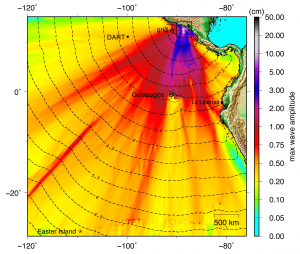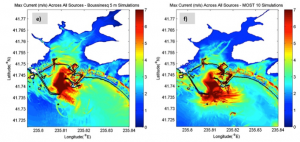Two articles I have been working on over the past few months have recently been published in the academic journals ‘Pure and Applied Geophysics’ and ‘Geophysical Research Letters’.
The first article “Observations and Modeling of the August 27, 2012 Earthquake and Tsunami affecting El Salvador and Nicaragua” (Pure and Applied Geophysics, DOI 10.1007/s00024-014-0782-2) discusses how a relatively weak earthquake generated a surprisingly large tsunami with maximum heights of the order of 6 m and inundation distances over 100 m. Fortunately, this tsunami was focused on an unpopulated stretch of coastline and there were very few injuries and no deaths. The only injuries were sustained by a group of people who happened to be on the beach late in the evening when the earthquake and tsunami struck. (I previously reported on this event in a blog post following our field survey to the disaster area).
This event underscores the hazard posed by a special type of ‘slow earthquake’ known to occur along the Central America Trench. In 1992, some 160 km to the south, offshore of Nicaragua, a somewhat larger earthquake with similar characteristics to this event produced a tsunami wave of over 10 m, killing several hundred people.
The second publication “Assessment of the tsunami-induced current hazard” (Geophysical Research Letters, DOI 10.1002/2013GL058680) details our work at the University of Southern California Tsunami Research Center focused on the quantification of tsunami induced currents and maritime tsunami hazards. While most tsunami research until recently has focused on inundation and coastal flooding as a primary cause of damage, observations from recent and historical tsunamis show that significant damage and effects occur frequently in ports and harbors even though there is no overland flooding. Of course this in itself is not totally noteworthy, however, relating tsunami induced current speeds to levels of damage within a port or marina and quantifying these effects with numerical models has not been done before. For this study we relied on our catalog of tsunami damage and current speed recorded at sites throughout the Pacific Ocean that were affected by the 2009 Samoa, 2010 Chile and 2011 Japan Tsunamis.
I am very grateful to my co-authors and collaborators on both of these papers for all of the hard work in getting them published.

